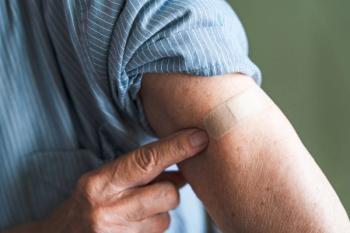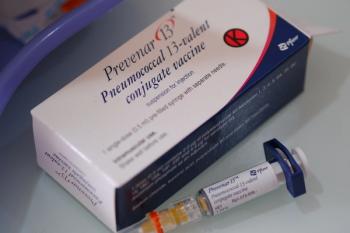
Operation Warp Speed On Track for COVID-19 Vaccine Distribution by January 2021, Officials Say
Two senior administration officials from Operation Warp Speed offered the latest updates on COVID-19 vaccine development.
Senior administration officials with the US government’s Operation Warp Speed (OWS) expressed cautious optimism that a safe and effective coronavirus disease 2019 (COVID-19) vaccine will be ready to distribute by January 2021, according to a recent briefing.
Amid the COVID-19 pandemic, the defense department has implemented OWS, working closely with several federal government departments to evaluate, determine, and distribute vaccines, therapies, and diagnostics at an accelerated pace.
At OWS’ most recent briefing on August 13, Paul Mango, deputy chief of staff for policy at the Department of Health and Human Services (HHS) and secretary principal executive for OWS, and Francis Collins, MD, PhD, director of the National Institutes of Health (NIH), announced the latest updates on the distribution timeline for a vaccine in the US, and discussed the clinical trials underway for evaluating the most effective and safe therapeutics and diagnostics for treating severe acute respiratory syndrome coronavirus 2 (SARS-CoV-2), the virus that causes COVID-19.
Mango announced 3 key takeaways:- OWS is “absolutely on track for hitting all of [its] milestones”
- The operation is maximizing probability of success of having tens of millions of doses of vaccines by January 2021, which is its goal
- While OWS is doing all it can to reduce the financial risk of private sector partners, it is also not reducing the regulatory rigor of evaluating and approving vaccines
The most significant steps forward since the last briefing included the expansion of many agreements in the private sector, which are working to develop COVID-19 vaccines in the form of support for manufacturing work.
Mango also summarized OWS’ investments for COVID-19 vaccines, which include:
- $2 billion investment for the advanced development – clinical trials and manufacturing – of
Sanofi and GlaxoSmithKline (GSK)’s investigational vaccine , which is a protein-based technology - $1 billion investment towards large-scale manufacturing and delivery of
Johnson & Johnson’s investigational vaccine candidate that uses viral vector technology modeled after Johnson & Johnson’s Ebola vaccine - $1.5 billion for 100 million doses of
Moderna’s messenger RNA vaccine , which was developed in collaboration with NIH. This investment also includes to option to purchase up to 400 million more doses of the vaccine
Under OWS, the US has now announced manufacturing support for 6 vaccine candidates: Moderna, Johnson & Johnson, Sanofi GSK, Novavax,
“Making up front investments in manufacturing and mitigating much of these financial risks for the companies is key to maximizing the probability that we'll have a safe and effective vaccine to start distributing no later than January 2021,” Mango said.
Mango also said that OWS has been working closely with the FDA; the administration is providing the agency with a “constant stream of data” concerning vaccine clinical trials, Mango said.
Mango also stressed that while the clinical trial practices for OWS is particularly intensive, the FDA is implementing “the same regulatory evaluation rigor for Operation Warp Speed vaccines and therapeutics as they use for any other product review.”
Collins covered the therapeutic and diagnostic facets of the COVID-19 pandemic and investments from OWS. Collins remarked on the public-private partnership
Collins outlined the progress being made in the vaccine sphere, with 2 phase 3 trials currently underway that are utilizing the RNA therapeutic approach for vaccine candidates from Moderna and Pfizer. The Moderna RNA vaccine candidate was initially developed with NIH, and took 65 days to develop from initial design to initiate the phase 1 trial, “which is a world record by several months,” according to Collins. “But that was not because we cut corners, it's because that particular technology makes it possible to do the front-end development as a vaccine much more quickly,” Collins said.
Collins said that he was “cautiously optimistic” since there are currently 6 vaccines that are each using a different scientific strategy. “At least 1 of these will, by the end of this year, turn out to be safe and effective,” he said.
Newsletter
Pharmacy practice is always changing. Stay ahead of the curve with the Drug Topics newsletter and get the latest drug information, industry trends, and patient care tips.





























































































































